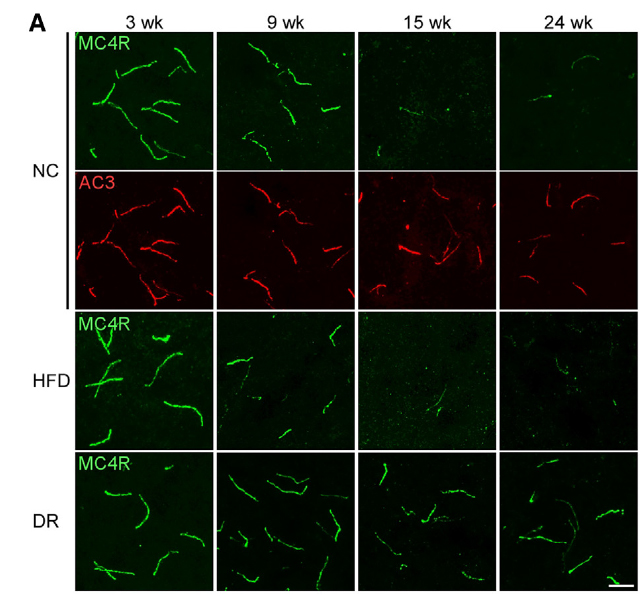So you've just turned 40. Congrats! You make little groaning sounds now when you stand up, you just noticed a gray hair in your eyebrow of all places, and you've finally given in and graduated to a new notch on your belt.
Age-related weight gain – or middle-age spread – is so common in many parts of the world that it's almost become a cliché. The average young adult in the US can expect to put on nearly 15 kilograms (about 30 pounds) by the time they're 50.
A recent study on the brains and bodies of mice might help us better understand why our own bodies more easily put on weight as we age. Researchers from Nagoya University and Osaka University in Japan claim changes in the shapes of neurons in a region of the brain responsible for appetite and metabolism could be significant factors.
While some might celebrate the 'dad or mom bod' as a sign of 21st-century sex appeal, it's also true that excess weight gain as the years tick by can put individuals at a higher risk of a litany of health problems, from type 2 diabetes to cardiovascular disease.
Modern diets and a sedentary lifestyle undoubtedly play a role in weight gain in many parts of the world. Still, it's also accepted that changes in the human body make it significantly harder to lose weight with each passing decade.
One way our body depletes fat is to convert it to heat to keep ourselves warm. Babies have this down to a fine art, burning up the energy reserves stored in what is referred to as brown adipose tissue.
This ability to send lipids up the metabolic chimney declines with age, suggesting at least some of the fat we store around our gut and visceral organs is the result of changes in how the body keeps itself warm.
To find where this 'thermostat switch' might be flipped, the researchers turned their attention to the body's central circuit for managing temperature, located in a part of the brain called the hypothalamus.
Here, the melanocortin-4 receptor (MC4R) is known to play a critical role in moderating energy expenditure with respect to energy input. The researchers wondered whether this receptor's cellular dynamics might point the way to metabolic changes that emerge as we grow older.
Using mice as a test model, the team introduced antibodies designed to highlight MC4R proteins. They identified tiny projections, called primary cilia, on the sides of certain hypothalamus cells that appeared to be exclusively jam-packed with these proteins
Comparing MC4R-positive cilia in the brains of young rats with those in the brains of 'middle-aged' rats, researchers found a distinct difference in lengths. As the rats aged, these projections seemed to shorten, to the point that they virtually vanished in many of the older, more obese rats.

Artificially reducing the lengths of the cilia using genetic engineering resulted in younger mice eating more and burning off less fat, increasing their body mass. Injecting an appetite-suppressing hormone, called leptin, into the short-cilia rats also seemed to have no effect, implying MC4R was a crucial link in the chain of appetite control.
"This phenomenon, called leptin resistance, is often observed in obese human patients as well. This is an obstacle to the treatment of obesity, but the cause has long been unknown," says Nagoya University medical scientist Manami Oya.
To determine a relationship between the disappearing cilia and diet, the team raised the test animals on different kinds of food. On a comparatively fatty diet, the MC4R-positive cilia shrank faster compared with those raised on a diet containing less fat.
Which goes to show, while the steady erosion of youth reduces our body's capacity to burn fat like it used to, our tendency to pile our plates with fatty foods only ensures middle age comes with a larger spread.
"Moderate eating habits could maintain MC4R+ cilia long enough to keep the brain's anti-obesity system in good shape even as we age," says senior author Kazuhiro Nakamura, a physiologist at Nagoya University.
This research was published in Cell Metabolism.
